Non-Fungible Tokens, commonly known as NFTs, are not new commodities in the digital market. These digital items first came onto the scene in 2014. However, the popularity of NFTs only reached its peak (so far) in 2021.
Although Twitter co-founder Jack Dorsey’s $2.9 million sale of his first-ever tweet as an NFT in 2020 is noteworthy, digital artist Pak’s $91.8 million sale of their ‘The Merge’ art is thought to have sparked the rise of NFTs in 2021. NFTs have become incredibly popular ever since, influencing many celebrities and big brands to start creating and selling their own NFT collections.
Nike, for instance, has been creating NFTs for their sneaker collections named Cryptokicks, selling for upwards of $134,000. However, creating an NFT collection isn’t subject to only mega-corporations or those with the backing of thousands, but rather to anyone who wishes to do so.
Thousands of digital artists have made the switch over to NFTs to capitalise on the lucrative model and reach a wider audience, and you don’t need to spend big bucks to get your collection up and running. But how much does it cost to create an NFT?
In this article, we’ll look at the cost of minting an NFT collection, comparing the costs of different blockchains, and covering the entire process of NFT your first NFT minting.
How Much Does it Cost to Create an NFT?
The price for minting NFTs varies, typically ranging from $0.1 to $150. However, it may sometimes exceed this range depending on factors related to the chosen blockchain.
The Ethereum blockchain, for example, has charged fees of over $500 to mint one NFT at its busiest time. But the good news is Ethereum is not the only network where you can create NFTs. Several other blockchains can allow you to mint your NFT and NFT collection – at a generally cheaper rate than Ethereum.
That said, certain costs are associated with almost all NFT minting processes, regardless of the blockchain. These costs include the following:
- Gas fee: This is the fee for executing transactions on a blockchain. Every blockchain operation, including NFT minting, requires at least one transaction, which incurs a gas fee.
- Account fee: This is the amount paid to the NFT marketplace. Depending on the NFT marketplace, you might incur some account fees while creating your NFT.
- Listing fee: While some NFT platforms will allow you to mint your NFTs at no cost, you may be charged a fee for listing the NFT for sale. This is referred to as the listing fee.
A blockchain’s gas fees are primarily influenced by the network’s supply and demand. When there is a high demand for a blockchain, the transaction fees increase, resulting in an overall increase in NFT minting costs.
Moreover, the volatile price of crypto assets affects how much it would cost to create an NFT. In essence, the cost of minting an NFT is not a set figure, but it fluctuates due to various factors.
The Cost of Creating NFTs on Different Blockchains
Being the first programmable blockchain to enable the registration of digital items, the Ethereum network is the most popular chain for minting NFTs. As of April 2022, a total of 80,300 NFT collections have been minted on the Ethereum blockchain. That said, there are other blockchains where you can create NFTs.
The following are the most popular blockchains (including Ethereum) for minting NFTs, as well as the price differences for NFT creation on those networks.
Polygon
The Polygon blockchain allows you to create your NFT at no cost via the most popular NFT marketplace, OpenSea. There are no upfront costs for minting NFT on Polygon, as the network employs the lazy minting option by default.
In addition, you will be able to list your NFT for sale on the Polygon network entirely for free. However, the NFT marketplace charges a 2.5% service fee, which will be deducted from the NFT’s selling price after it’s sold.
Bear in mind that your NFT selling price will be in Ether (ETH), even though you are on the Polygon blockchain.
Ethereum
Ethereum is the most prominent blockchain for creating NFTs – perhaps because it was the first network to enable NFT minting. It is highly reliable and has garnered credibility over the years. And thanks to the recent “Merge”, the process of NFT minting on the Ethereum blockchain has become much more efficient.
There are two ways of minting NFTs on the Ethereum blockchain, namely regular and lazy minting. Due to the high gas fees, creating your NFT on Ethereum through regular minting can be quite expensive, averaging 0.01 ETH to 0.05 ETH. Meanwhile, lazy minting allows you to create your NFT at no upfront costs on the network.
You can mint your NFT on the Ethereum blockchain via any of the popular marketplaces, such as OpenSea, Rarible, and Mintable.
Solana
Solana is another popular blockchain for minting NFTs, with several digital projects launched daily. It is one of the fastest programmable blockchains in the cryptocurrency space, and its distinctive combination of the proof-of-history (PoH) and Proof-of-Stake (PoS) consensus mechanisms helps reduce validation times and fees significantly.
Solana is a more affordable alternative for NFTs compared to Ethereum. You will only need to pay the network’s gas fees for three on-chain transactions, including two approval transactions for minting and one for setting the price when listing the NFT for sale.
With each transaction costing 0.00045 SOL, the total cost of creating an NFT on the Solana blockchain stands at 0.00135 SOL. Meanwhile, the current market price of 0.00135 SOL is $0.0445.
The Solana network is supported by numerous NFT marketplaces; namely SolSea, Solanart, Magic Eden, and OpenSea.
The Best 5 Websites for Minting NFTs
Transforming your piece of art into an NFT is only possible on legitimate platforms known as NFT minting websites. The following are the best websites for creating your NFTs.
1. Enjin (via JumpNet)
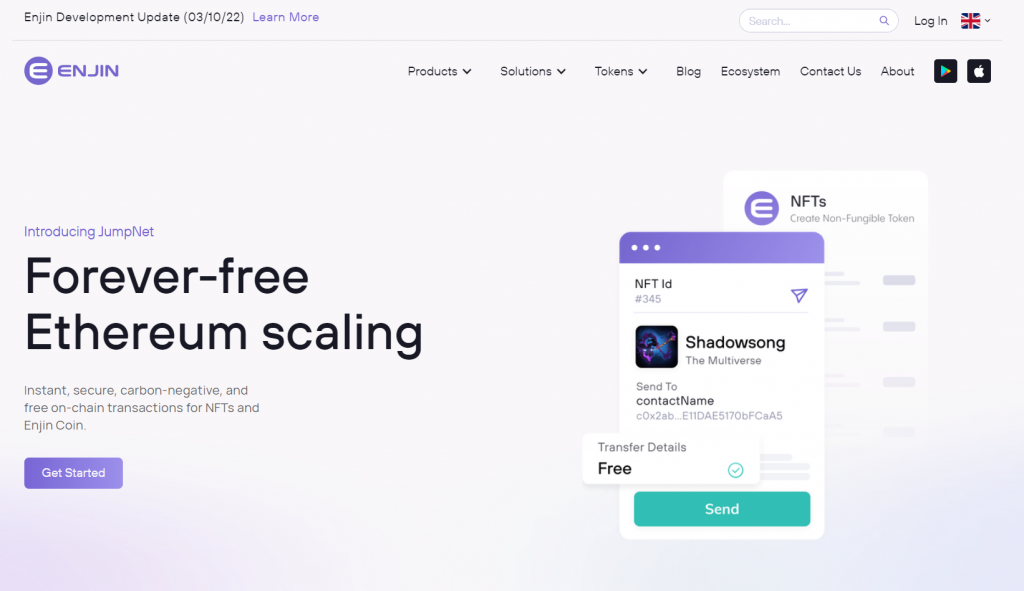
You can create your NFTs on Enjin through JumpNet – an essentially private version of the Ethereum network that is now available to the public. The platform charges its token, known as the Enjin Coin (ENJ) for minting. Hence, you may need to purchase some ENJ tokens to start minting via Enjin.
Fortunately, Enjin – through JumpNet – only charges minimal minting fees. So, you don’t have to worry about breaking the bank when creating an NFT through the platform. Moreover, transactions are more convenient during the minting process, as you can easily transfer ENJ tokens between the Ethereum and JumpNet blockchains.
Keep in mind that JumpNet is more suited for gaming NFTs rather than art NFTs. So, you may want to consider a different website for your art-inclined NFTs. Also, Enjin is built for minting ERC-1155 tokens, not ERC-721 non-fungible tokens.
2. Binance NFT (BNB Chain)
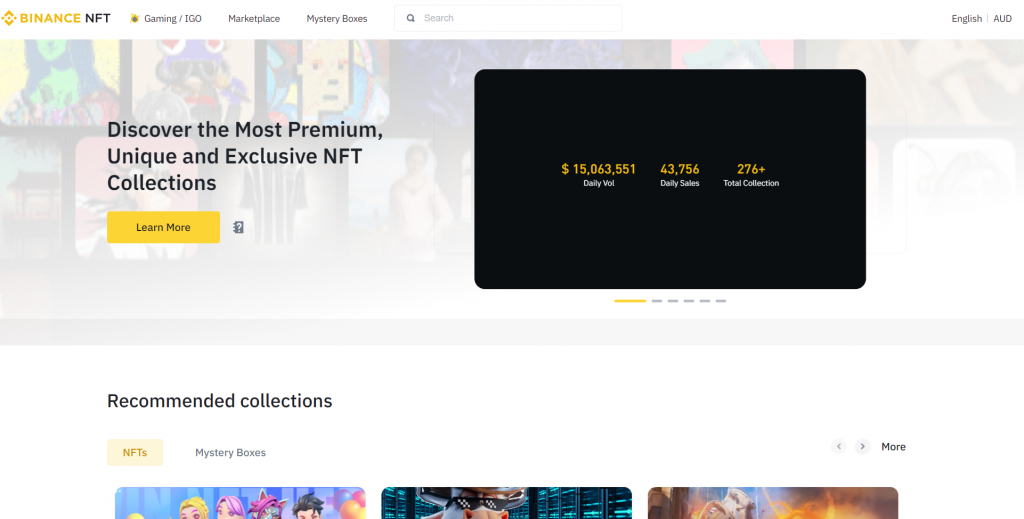
Binance, known for trading billions of dollars in cryptocurrency every week, is one of the most popular and reliable platforms in the cryptocurrency space. What you may not know is that Binance does more than just trade crypto currency, and that you can create your own NFTs using the Binance Smart Chain, which is part of the BNB Chain ecosystem.
Minting an NFT on the Binance Smart Chain costs about 0.022BNB, which is slightly above $6. While this amount may be discouraging, you should find some consolation in the fact that, unlike other minting websites, there are no gas fees on the platform. In addition, listing your NFT on the Binance Smart Chain’s marketplace comes at zero cost.
However, it is important to mention that Binance charges a 1% trading fee if or when your NFT is sold.
3. Nifty Gateway
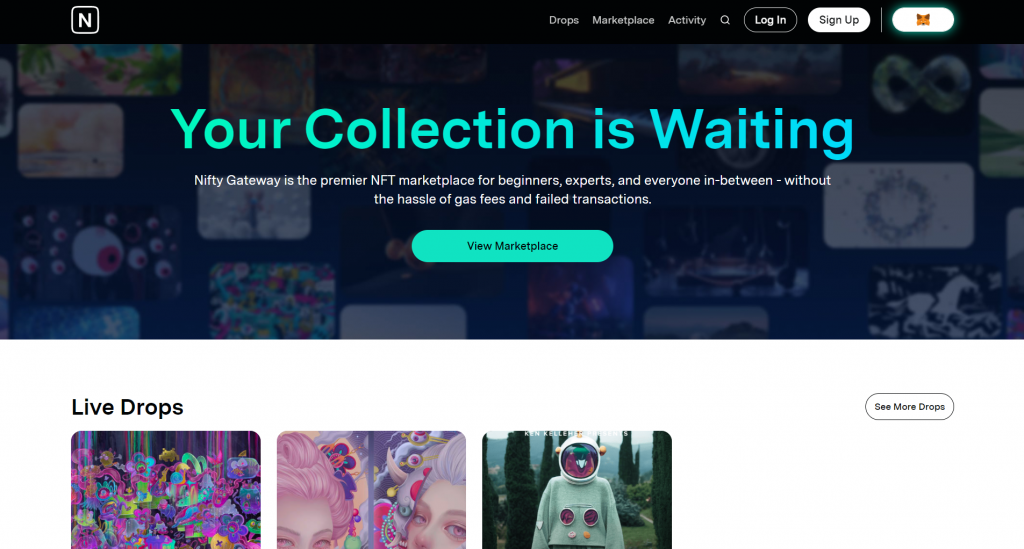
Nifty Gateway is mostly notable for its large, diverse NFT marketplace that hosts a wide variety of pieces and collections, like Bored Ape Yacht Club and World of Women. That said, Nifty Gateway doesn’t only buy and sell NFTs but also allows the minting of NFTs on its platform.
Creating an NFT on Nifty Gateway is completely free, even though gas is used during the process of minting the digital item. This NFT platform guarantees the payment of the gas fees incurred by its users. So, if you are looking to mint an artwork at no cost, Nifty Gateway could be an excellent choice.
4. OpenSea
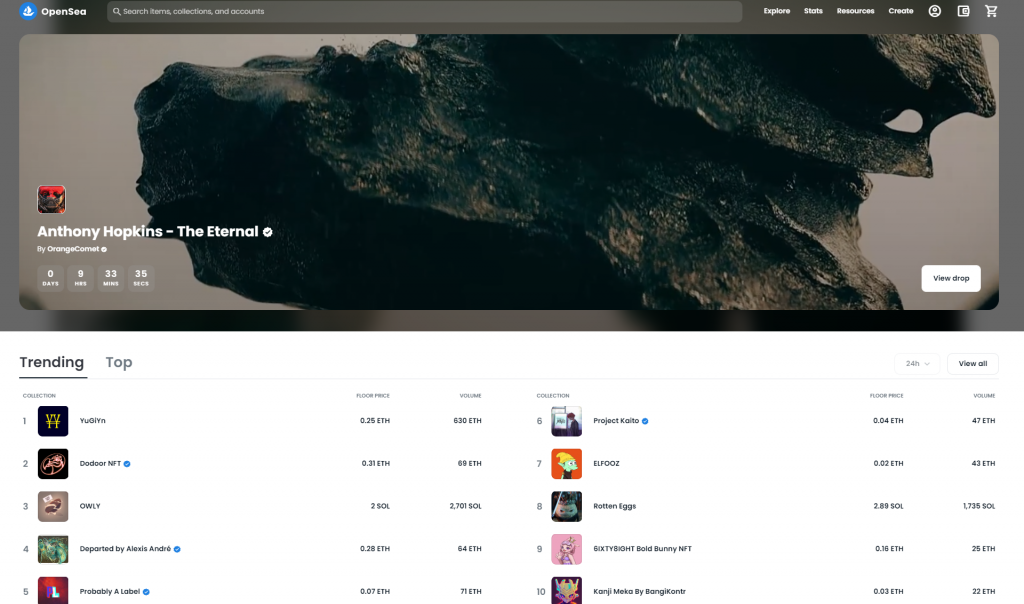
OpenSea is a reputable website that allows you to buy, sell, and even mint digital assets conveniently. Given the size of its NFT marketplace, OpenSea is one of the best places to mint your NFT.
Because it uses the lazy minting method, OpenSea doesn’t charge a fee for NFT minting on its platform. However, it does impose a 2.5% service fee, which will be deducted from your NFT’s selling price. This service fee is in Ether (ETH).
Furthermore, OpenSea charges gas fees for the computing power required to operate the Ethereum network – the blockchain on which most of the website’s listed NFTs are contained. These gas fees vary at different times of the day.
5. Rarible
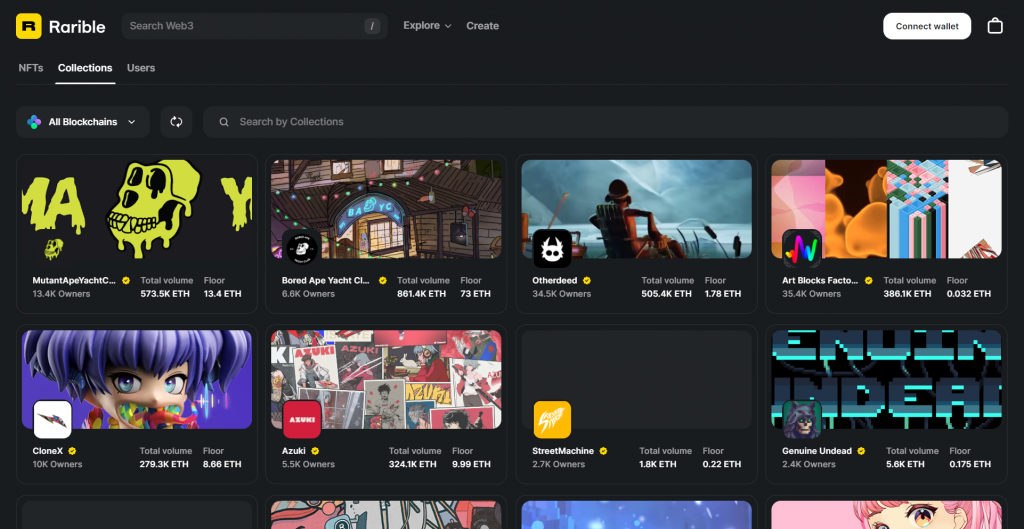
Rarible is another popular site for creating and selling NFTs. Like OpenSea, it employs the lazy minting technique, where your NFT is not fully minted until someone decides to purchase it. This means you can mint an NFT for free on Rarible.
Additionally, Rarible has a growing community of users where you can connect with fellow NFT enthusiasts. While Rarible might not get as much attention as other NFT minting websites, it does make a great option for creating and selling your NFT.
What Does it Mean to ‘Create’ an NFT?
Creating an NFT simply means writing and storing information (metadata) about a piece of art on a blockchain. When you mint an NFT, you are basically converting a simple image into data that is permanently stored on a network that anyone can read but no one can destroy. All information about your artwork can be accessed by the public.
The process of creating an NFT usually involves the upload of your digital asset for it to be stored on a permanent cloud storage service. It also includes inputting details, such as the title and description of the digital item.
How to Create Your Own NFT
Minting digital assets as NFTs is an excellent way for you to monetize and earn the deserved credits for your work – even long after sale. Fortunately, it is a simple procedure that you can perform by yourself. Here’s a step-by-step guide on how to create and sell an NFT.
Step 1: Select your digital item
Firstly, you will need to decide on the unique digital item you want to convert into an NFT. It can be a custom art piece, image, music, meme, or even a tweet. Remember, an NFT is a unique digital asset with a single owner; this rarity is what gives an NFT value.
That said, you must own the intellectual property rights to the asset you wish to mint as an NFT. If you create an NFT for an item you don’t own, you could run into some legal trouble.
If you’re looking to create a collection of NFTs and don’t have all the individual files ready then check out how to create NFT art without coding.
Step 2: Choose a blockchain
Having selected your unique digital item, the next step is to choose a blockchain network and begin the minting process. Although Ethereum is the most popular network for minting NFTs, there are other excellent alternatives, such as Solana, Polygon, BSC, and so on.
Step 3: Set up your wallet
You will need some cryptocurrency for your NFT minting; hence the need to set up a digital wallet. This wallet will provide you access to digital tokens. Some of the best NFT wallets include Metamask, Trust Wallet, and Coinbase Wallet.
Now, you will need to purchase some cryptocurrency on your chosen blockchain. You can do any leading cryptocurrency exchange. We suggest using Binance for this.
Step 4: Choose your NFT marketplace
After setting up a digital wallet, you must determine an NFT marketplace to create your NFT. Rarible, OpenSea, Nifty Gateway, and the Binance NFT are some of the best platforms for minting NFT.
Before settling on a choice, it is advisable that you check out each NFT marketplace and whether it is suitable for your NFT. For example, minting an artwork on NBA Top Shot might not be ideal, as the marketplace is basketball-inclined.
After choosing an NFT marketplace, you will need to set up a profile on the platform and connect it to your digital wallet. This will enable you to pay the necessary charges for the NFT minting process and receive your NFT sale proceeds.
Step 5: Upload the item
Now, it is time to transform your unique digital asset into a marketable NFT. To do this, you will be required to upload your digital file (JPEG, PNG, GIF, MP3, or any other file format) to the NFT marketplace. The uploading process may vary from one NFT platform to another, so make sure to have read your preferred platform’s guide before performing this action.
Step 6: Set up the sales process
The ultimate step in the NFT minting process is determining how to monetize your NFT. Depending on the NFT platform, you can sell your digital asset at a fixed price, on a timed auction, or an unlimited auction.
With the fixed price option, the first person to meet your asking price will acquire your NFT. Meanwhile, both the timed auction and the unlimited auction allow interested buyers to place a bid on your NFT, with the former having a time limit.
In any case, make sure to specify your minimum auction price, royalties if your NFT is resold on the secondary market, and the length of your timed auction.
Final Words
Creating an NFT is not only an exciting process that you will enjoy right from the jump but also an investment that can help you make a lot of money. However, you should always consider how much it will cost to mint an NFT before venturing into the process.








